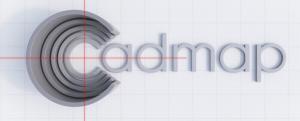Cadmap Ltd provide over 200 PAS 128 Utility Mapping Surveys for Electric Charging points at Petrol Stations in the UK
Cadmap provide Utility Mapping Surveys for charging station excavations petrol stations accross UK.
LONDON, GREATER LONDON, UNITED KINGDOM, September 6, 2023/EINPresswire.com/ -- Cadmap Limited were approached by 2 major companies in the petrol station industry to prepare fee proposals for over 180 sites in the UK to deliver accurate base maps of existing features, above and below ground.The aim of the surveys was to provide a detailed topographical survey with a Utility mapping survey overlaid all surveyed to OS-GPS survey coordinates.
This involved carrying out intensive topographical survey work and utility mapping surveys to PAS128 standards with post processing of the GPR data to prove their findings. It was vital the utility survey was as accurate as possible so the excavation team could dig with confidence whilst preparing the site for the installation of the new electric charging points for vehicles. https://www.cadmap.co.uk/Surveying/PAS128UTILITYSURVEYS
The PAS 128 level or accuracy the clients expected was M2P.
https://www.cadmap.co.uk/Surveying/LandTopographicalSurveys
The "M2P" classification in PAS 128 refers to the level of accuracy and confidence in the information about underground utilities. Here's what "M2P" typically means in the context of PAS 128:
M2: This indicates the level of confidence in the horizontal (left-right) position of the underground utilities. M2 is a moderate level of confidence. It means that the utility's location is determined with some degree of accuracy but not at a very precise level. This might involve the use of multiple survey methods, including historical records, plans, and some on-site verification. https://www.cadmap.co.uk/Surveying/PAS128UTILITYSURVEYS
P: The "P" in M2P signifies the level of precision or detail in the information. In the context of PAS 128, "P" stands for "Positional," which means that the focus is primarily on locating the utility's position horizontally.
In summary, PAS 128 Level M2P suggests that the horizontal position of underground utilities is known with moderate confidence, but the level of detail or precision might not be as high as in some other levels of PAS 128. It's important to note that different projects and situations may require different levels of accuracy and detail, and PAS 128 provides a framework for specifying those requirements. Utility detection and mapping companies often use PAS 128 standards to determine the appropriate level of utility location accuracy for a given project. https://www.cadmap.co.uk/Surveying/PAS128UTILITYSURVEYS
Post processing of GPR data was required after data collection.
Post-processing Ground Penetrating Radar (GPR) data is a critical step in extracting meaningful information from GPR surveys. GPR is a geophysical method used for subsurface imaging and can be applied in various fields, including civil engineering, environmental science, archaeology, and geophysics. Here are the key steps involved in post-processing GPR data:
Data Collection and Quality Control:
Ensure that data collection is carried out following the recommended survey parameters and standards.
Verify the data quality by checking for common issues such as noise, interference, and signal attenuation during data acquisition.
Data Conversion:
Convert the raw data collected by the GPR equipment into a suitable digital format for processing and analysis. Common file formats for GPR data include SEG-Y and GPR-specific formats.
Data Pre-processing:
Apply filters and corrections to enhance the quality of the GPR data. This may involve:
Removing background noise and spikes.
Applying gain adjustments to correct signal attenuation with depth.
Conducting zero-time correction to align data.
Data Stacking:
Stacking is a technique used to improve signal-to-noise ratio. Multiple traces from the same location are averaged together to enhance the signal.
Migration:
Migration is a process that improves the spatial accuracy of GPR data by correcting for the distortion of subsurface features caused by the GPR antenna's movement during data collection.
Velocity Analysis:
Determine the propagation velocity of electromagnetic waves in the subsurface materials. Accurate velocity information is crucial for depth estimation.
Time-to-Depth Conversion:
Convert the two-way travel time (measured by the GPR) to depth by using the propagation velocity and accounting for the signal's travel path in the subsurface.
Image Enhancement and Interpretation:
https://www.cadmap.co.uk/Surveying/LandTopographicalSurveys
Enhance the GPR images to improve visualization and interpretation of subsurface features.
Interpret the processed GPR data to identify and characterize subsurface targets, such as utilities, voids, or geological features.
Integration with Other Data:
Combine GPR data with other geospatial information, such as GPS data or geological maps, to improve the understanding of subsurface structures.
Reporting and Documentation:
Create detailed reports and documentation that describe the survey, data processing steps, results, and interpretations.
Data Storage and Archiving:
Store processed GPR data securely for future reference and analysis. Proper data archiving ensures that the information is accessible for long-term use.
Quality Assurance and Quality Control (QA/QC):
Implement QA/QC procedures to verify the accuracy and reliability of processed data.
The specific post-processing steps and software tools used may vary depending on the GPR equipment, data complexity, and project objectives. It's important to have expertise in GPR data processing and interpretation to ensure accurate results and meaningful insights from the collected data.
https://www.cadmap.co.uk/Surveying/PAS128UTILITYSURVEYS
Working on live petrol station sites requires certain training certificate, company accreditations and insurances.
Website – www.cadmap.co.uk
Land Survey and Building Surveying.
• Topographical Land Surveys
• Boundary Surveys
• Measured Building Surveys
• Monitoring Surveys
• Site Engineering Setting Out
• 3D Laser Scanning – REVIT Models
Underground Surveys PAS-128.
• Underground Utility Services Surveys
• Ground Penetration Radar and Radio Detection
• Drainage Surveys
• CCTV Drainage Condition Surveys
• Blocked Drain Clearance and Jetting.
Mr Adam Page
Senior Utility Surveyor.
Cadmap Limited.
https://www.cadmap.co.uk/
MIke Brett
Cadmap Limited
+441483429385 ext.
email us here
Visit us on social media:
Facebook
Twitter
LinkedIn
Instagram
YouTube
Legal Disclaimer:
EIN Presswire provides this news content "as is" without warranty of any kind. We do not accept any responsibility or liability for the accuracy, content, images, videos, licenses, completeness, legality, or reliability of the information contained in this article. If you have any complaints or copyright issues related to this article, kindly contact the author above.



